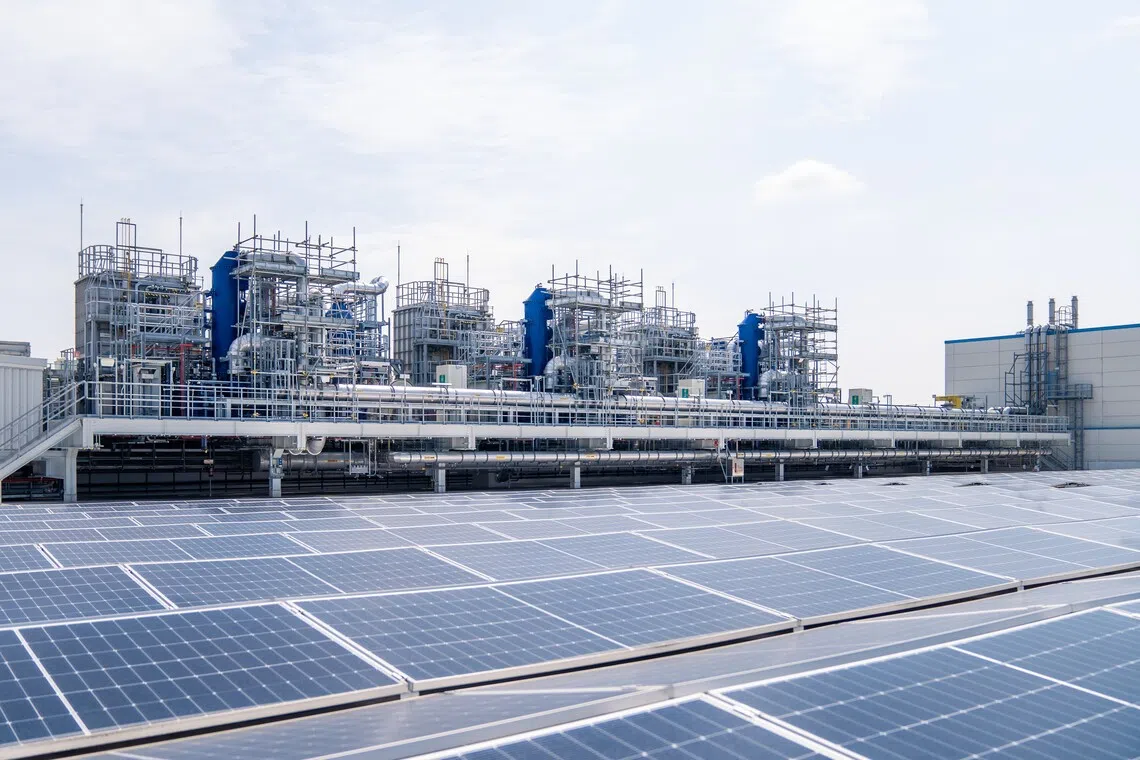Micron moves the needle on energy savings
The company is implementing technologies and forging partnerships that are helping to reduce emissions and advance sustainability in high-tech manufacturing
MICRON Singapore is cutting energy use at scale, deploying solar power, piloting breakthrough abatement technology and embedding a strong culture of sustainability to meet its global target of net-zero emissions by 2050.
A world leader in memory solutions, Micron’s Singapore site anchors the industry’s leading 3D Nand technology, powering future device innovation across data centres and the intelligent edge, while also serving as a test bed for sustainability.
The company is targeting net-zero greenhouse gas (GHG) emissions in operations by 2050, with a milestone of a 42 per cent absolute reduction by 2030 against its commercial year 2020 baseline.
Sustainability is embedded across the company’s operations, with interdepartmental teams spanning facilities, process engineering, equipment and procurement accountable for energy and emissions goals.
Meanwhile, a Green Initiative Committee comprised of volunteers drives employee engagement, while recognition incentives and titles such as “bravo rewards” and “culture champion” titles promote participation. A sustainability criterion has also been added to Micron’s Technical Leadership Program to nurture technologists focused on sustainable solutions.
These initiatives have yielded strong results. Since 2021, Micron Singapore has achieved more than 150 million kilowatt-hour (kWh) in energy savings and 200,000 tonnes of carbon dioxide equivalent emission reductions. A major contributor has been advanced HFO chillers coupled with a chiller plant optimisation system. This improved energy efficiency by 20 per cent, saving 33 million kWh of energy and 50,000 tonnes of carbon emissions. Solar power is also a growing pillar, with more than 36,000 panels on rooftops and car parks generating an estimated 24 million kWh of green electricity annually.

In 2022, the World Economic Forum recognised Micron as a Sustainability Lighthouse for its data-driven approach towards energy efficiency. Engineers armed with smart analytics and power sensors uncovered new savings opportunities, such as wet tools heater, idle flow reduction and dry etch chiller temperature optimisation.
“At Micron, collaboration drives sustainability. Internally, our engineering, operations, procurement and sustainability experts in working groups identify best practices to align our strategy and develop initiatives to reduce energy usage as well as greenhouse gas emissions,” says Joshua Lee, corporate vice-president and Singapore country manager, Micron Technology.
“Externally, we partner with utilities, vendors, and government agencies like NEA (National Environment Agency) and EDB (Economic Development Board). Our central abatement system in Singapore reduces emissions equal to about 10,000 cars annually and delivers major fuel and cost savings,” he adds.
That central abatement system, commissioned in December 2024, is Singapore’s first catalytic solution for fluorinated GHG gases. It removes about 95 per cent of these emissions, while using 90 per cent less fuel and cutting costs by around 35 per cent compared to conventional abatement methods.
Micron also partners with suppliers and researchers in energy efficient and emission-reduction technologies. Examples include smart controls for just-in-time eco-mode operations, energy recovery systems and low-emission replacement chemistries for the processing of GHG.
The company is scaling up its use of digital tools and smart controls. Future plans include advancing the use of artificial intelligence and smart manufacturing controls to enhance decision-making processes with real-time insights, detecting inefficiencies and identifying new improvement opportunities.
With clear targets, strong governance and cross-functional execution, Micron is showing how large-scale manufacturing can reduce energy use and emissions while strengthening operational resilience.
Decoding Asia newsletter: your guide to navigating Asia in a new global order. Sign up here to get Decoding Asia newsletter. Delivered to your inbox. Free.
Copyright SPH Media. All rights reserved.
